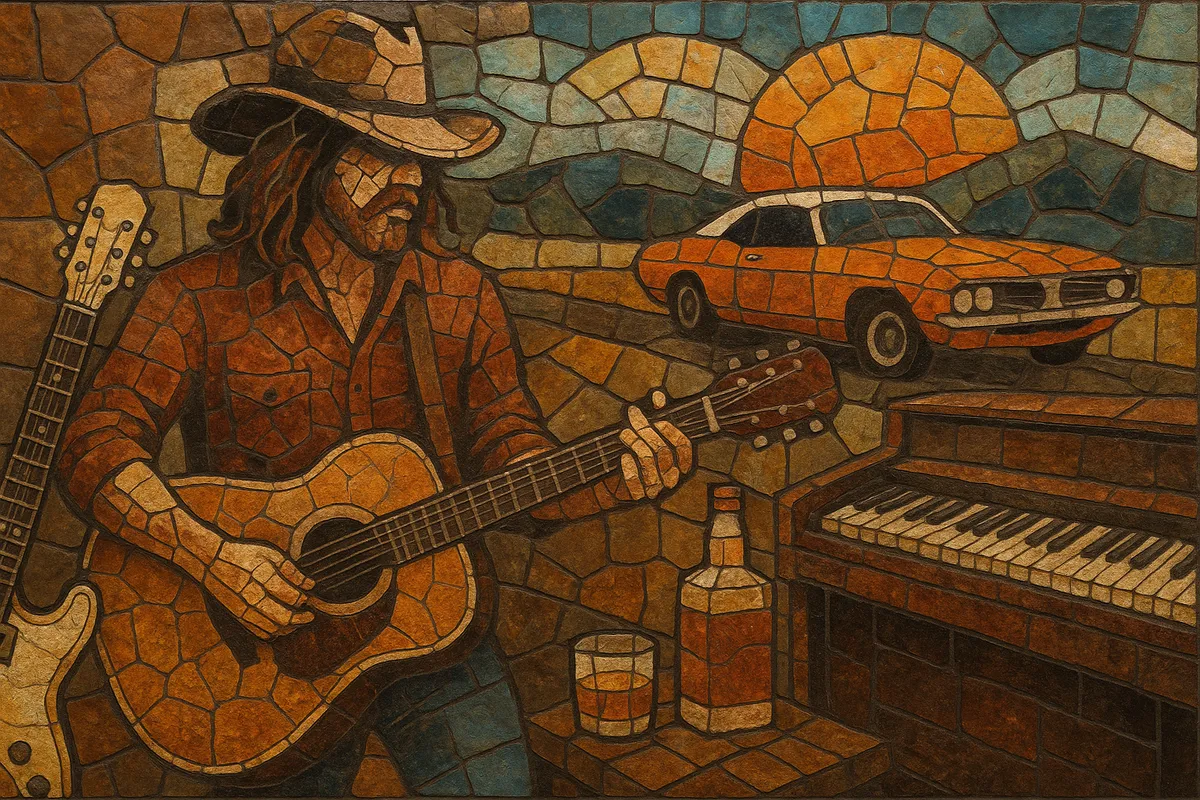
Southern rock is a guitar-driven strain of American rock that emerged from the U.S. South, blending the grit of blues and the twang of country with the volume and swagger of rock.
It is distinguished by twin-lead (often harmonized) guitars, prominent slide playing, boogie and shuffle grooves, and a live, jam-forward energy. Hammond B‑3 organ, piano, and rough-hewn, soulful vocals are common. Lyrically, it often explores working‑class life, regional identity, resilience, and the open road, while alternating between barroom stompers and expansive, improvisational epics.
Roots lie in the crucible of the American South, where blues, country, R&B/southern soul, and rock and roll intersected. Bands like The Allman Brothers Band (founded 1969) set the template: twin-lead guitars, extended improvisation, blues harmony, and a gospel‑tinged Southern feel. Swamp rock and boogie rock currents, plus country rock’s songwriting focus, further shaped the idiom.
Lynyrd Skynyrd, The Marshall Tucker Band, The Charlie Daniels Band, and ZZ Top drove the style onto national radio and arenas. Anthems like “Sweet Home Alabama” and “Ramblin’ Man” codified the balance of hooks, grit, and jam‑band musicianship. Three‑guitar lineups, harmonized leads, and slide in open tunings became signatures. Tragedies (notably Skynyrd’s 1977 plane crash) and industry shifts checked the first wave’s momentum.
While mainstream presence dipped, acts such as 38 Special and Molly Hatchet bridged toward AOR/hard rock, and the idiom’s jam ethos fed into the jam‑band scene. Its songwriting and regional storytelling helped seed alt‑country, Americana, and heartland rock. Legacy members (e.g., Gov’t Mule from the Allman lineage) kept the improvisational torch lit.
Drive‑By Truckers, Blackberry Smoke, and others refreshed the sound with modern production and literate, Southern‑gothic narratives. Festival circuits and heritage acts sustain the live tradition, while the style’s guitar language and grooves echo through southern metal, stoner rock, and contemporary country‑rock hybrids.
Southern rock remains a cornerstone of American roots‑based rock, celebrated for its virtuosic guitars, communal live feel, and durable anthems that bridge barroom immediacy with wide‑screen improvisation.

